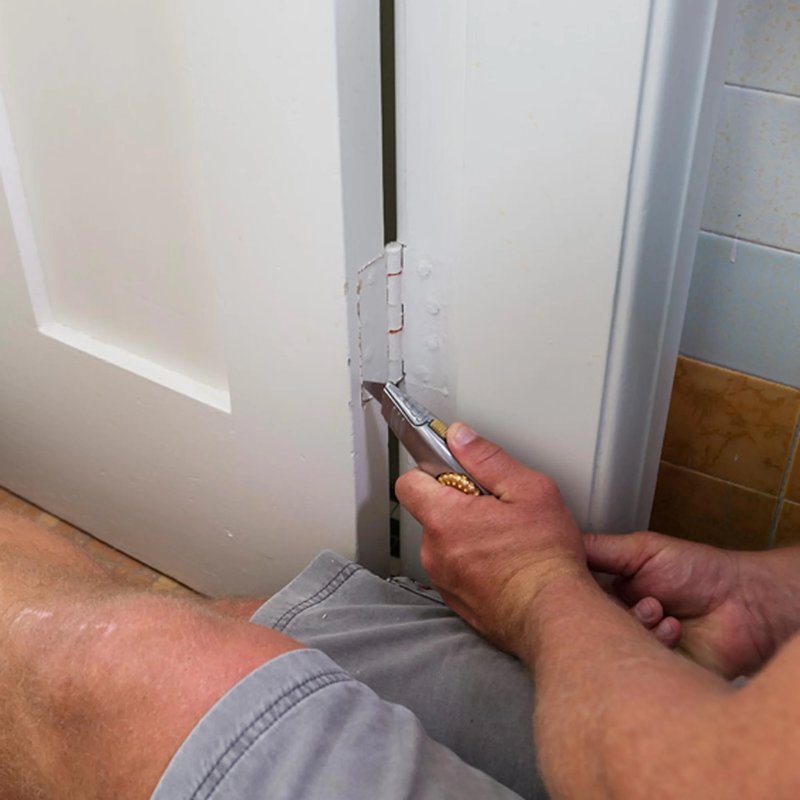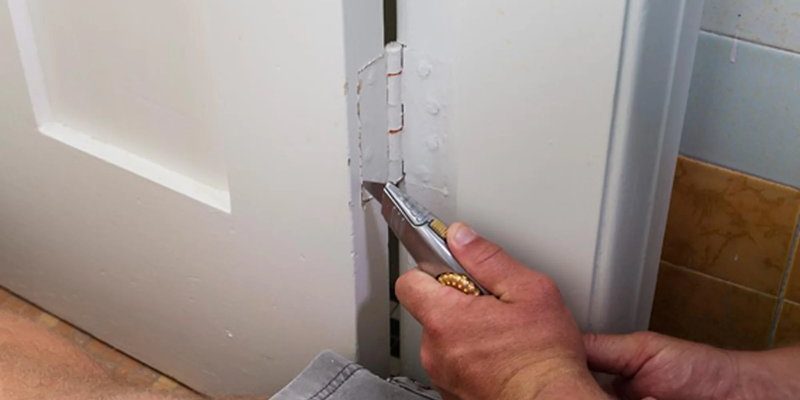
Honestly, exterior door hinges aren’t complicated magic. They’re basically sturdy metal pivots, much like the hinge on a favorite remote’s battery compartment, but built to carry the weight of a solid wood or metal slab, like those used in Jeld-Wen or Therma-Tru doors. When something’s off—whether it’s a hinge that’s worked loose, a frame that’s shifted, or just years of gravity at work—it sets off a chain reaction. That’s when you start hearing and feeling that scrape.
Let me walk you through why your exterior door hinge starts scraping the frame, what it actually means when it happens, and, most importantly, what you can do about it—no handyman degree required.
What Causes Door Hinges to Scrape the Frame?
You might be wondering, “Why now? My door worked fine for years.” Most scraping issues come down to a handful of culprits, and honestly, they’re usually more straightforward than they look. A *hinge scraping the frame* is a sign that something has shifted, worn out, or slipped out of place.
Sometimes, it’s as simple as the screws in your hinges working loose. Think about how often you open and close your exterior door. Over time, even the tightest screws can start to back out, especially if the door gets slammed or rattled by wind. When the screws loosen, the hinge moves ever-so-slightly, letting the door sag within the frame. This tiny change is enough to cause scraping along the edge.
Another big cause: *settling*. Houses are always moving—just a little. Shifts in temperature, humidity, or even a small change in the foundation can nudge the frame or jamb out of alignment with the door. It’s like when one leg on your kitchen table suddenly isn’t level anymore. Suddenly, the door doesn’t sit quite in the sweet spot—so the hinge starts scraping the frame.
And, of course, don’t forget simple *wear and tear*. Hinges can get rusty, pins can wear down, or cheap hardware can bend. When that happens, things don’t move as smoothly as they should, and the whole door may ride rough against its frame.
How to Spot Hinge Scraping Early
You don’t need a toolbox to notice when your exterior door is starting to scrape the frame. Sometimes it’s obvious: the door makes a squeal or grind every time you open it, and you can see the paint getting carved off near the hinges. But even before it gets that bad, you might see subtler signs.
Run your finger along the edge of the door where it meets the frame. If you feel a rough spot, or if the paint looks dull and rubbed off, there’s a good chance that’s where the hinge is scraping. Another giveaway is if the door starts to stick or isn’t closing as smoothly as it used to.
Try swinging the door open and closed while watching (or listening) closely. If you hear a click or scrape from the hinge area, or if the motion feels like it catches at one point, you’re probably dealing with a misaligned hinge or sagging door. Sometimes, you’ll even see daylight through the edge where the weatherstripping used to sit perfectly.
Quick tip: If you have a second (and a friend), open the door partway and lift up on the handle. If the door moves noticeably upward before the hinges stop you, those hinges are probably worn or loose.
The Role of Hinge Types and Installation
Not all hinges are created equal, and not all doors are hung perfectly the first time. Here’s the thing: exterior doors need tougher, often larger hinges than interior ones, because they’re heavier and get exposed to weather. Brands like Schlage and Emtek supply hinges with thicker pins and stronger leaves for this reason.
If someone replaced an original hinge with a lighter interior hinge, or if the hinges aren’t all the same size, you’ll almost always end up with problems down the road. Mismatched hinge sizes or types can make the door twist, putting uneven pressure on the frame and causing scraping.
Installation also matters—a lot. If the hinge isn’t set flush with the edge of the door, or if the screws didn’t bite deeply into solid wood (especially on those prehung steel doors), the whole support system gets wobbly. Even a little sloppiness at install can mean years of scraping and frustration.
Remember: The goal is for the hinge pin to sit perfectly straight, with each hinge leaf flush in its mortise (that’s the pocket cut in the wood). If your hinge looks crooked, or one leaf sticks out further than the other, that’s a big clue the scraping isn’t just a fluke.
How Seasonal Changes and Weather Impact Doors
This is something a lot of people overlook: doors are surprisingly sensitive to changes in weather and humidity. Wood, especially, expands in the summer and contracts in the winter. Even metal-clad doors, like those by Stanley or Mastercraft, can shift a little as temperatures swing.
When your exterior door soaks up moisture during a wet or humid season, it can swell—and suddenly, the gap between the door and frame shrinks. If the space was already tight, now the hinge might be jammed up against the frame every time you move the door.
You’ll also notice these problems more in older homes, where the door frame might have seen years of minor shifting or swelling and shrinking. In the cold, dry months, gaps might widen, so the scraping magically “disappears”—only to come back when the weather warms up.
If your scraping problem seems to come and go, pay attention to the seasons. Sometimes, a little sanding or a minor hinge adjustment in the right weather makes all the difference. Permanent fixes are best done when humidity is average—not at its extreme.
Common Fixes for a Scraping Exterior Door Hinge
So, what do you do when your exterior door hinge starts scraping the frame? Honestly, you can tackle most of these repairs without calling a pro. Start with this checklist:
- Tighten hinge screws. Grab a screwdriver and snug up every screw you see on the hinges—on both the door and frame sides. Even a quarter turn can help.
- Add longer screws. If the screws seem stripped or don’t grab, swap them for 2.5″ or 3″ wood screws. These bite into the wall framing for a sturdier hold.
- Replace worn hinges. If the hinge looks bent, the pin is loose, or there’s obvious rust, get a new one—ideally the same size and type. Don’t mix and match.
- Shim or adjust the hinge. Sometimes, adding a thin cardboard shim behind the hinge leaf can fix alignment. Or, you can lightly move the hinge up or down to reduce scraping.
- Sand the door edge. If you see obvious wood or paint damage where the scraping is happening, a bit of sanding (and a paint touch-up) might be needed.
Most fixes are about resetting everything to how it was: tight, square, and flush. If you’ve tried these and the scraping’s still there, you may have a bigger alignment issue that needs more attention.
When to Call a Pro (And What to Expect)
Let’s be honest: not every scraping hinge can be solved with a screwdriver and some determination. If you’ve done the basics and the door is still scraping—especially if the whole door feels crooked, or you see gaps at the top or bottom when it shuts—it’s probably time to get a contractor or carpenter involved.
Professionals deal with these problems all the time, especially with older houses that have shifted over the years. They have the tools to check if the *jamb* is out of square, or if the frame needs resetting. In some cases, they might pull the whole door, reposition the frame, and re-hang it properly—a bigger job, but one that makes the “brand new door” feeling come back.
You might pay a bit, but you’ll avoid more expensive repairs later. If weather sealing, insulation, or security are issues with the current door, a pro can recommend or install upgraded hinges that last longer without scraping.
Can You Prevent Hinge Scraping in the Future?
Absolutely. Like most home quirks, regular TLC goes a long way. Check your exterior door hinges once or twice a year—especially after big weather swings. Tighten the screws, wipe down the hinges to prevent rust, and keep an eye out for early signs of scrape marks or paint loss.
If your home is newer, a quick once-over as part of your seasonal maintenance can catch these problems before they get annoying. And if you’re replacing a door, make sure to use high-quality, exterior-rated hinges and get them set up *right* from the beginning.
Pro tip: If you’re in a super humid or rainy area, consider stainless steel or brass hinges—they resist rust and last longer, even when the elements try their best.
Why Bother Fixing a Scraping Hinge?
It might feel like a little scrape isn’t worth the fuss. But here’s the thing: left alone, a scraping hinge wears down not just the door, but the frame and, eventually, the weatherstripping. That means more drafts, higher energy bills, and even water leaks if rain finds its way in.
Plus, the longer you wait, the bigger the fix becomes. What starts as a few minutes with a screwdriver could turn into needing a full door reset—or, in the worst case, a total replacement. Taking action early doesn’t just save your nerves; it protects your home’s value, too.
A smooth-swinging door is more than a luxury—it’s a sign your home is cared for, weather-tight, and ready for anything.
Let’s face it: exterior doors work hard every single day. Giving the hinges a little attention, especially when they start scraping the frame, is one of those satisfyingly simple fixes that keeps your whole house happier—and your sanity intact. If you take care of your hinges now, you can look forward to years of quiet, reliable door swings (and maybe a little less ear-splitting sound every morning).
